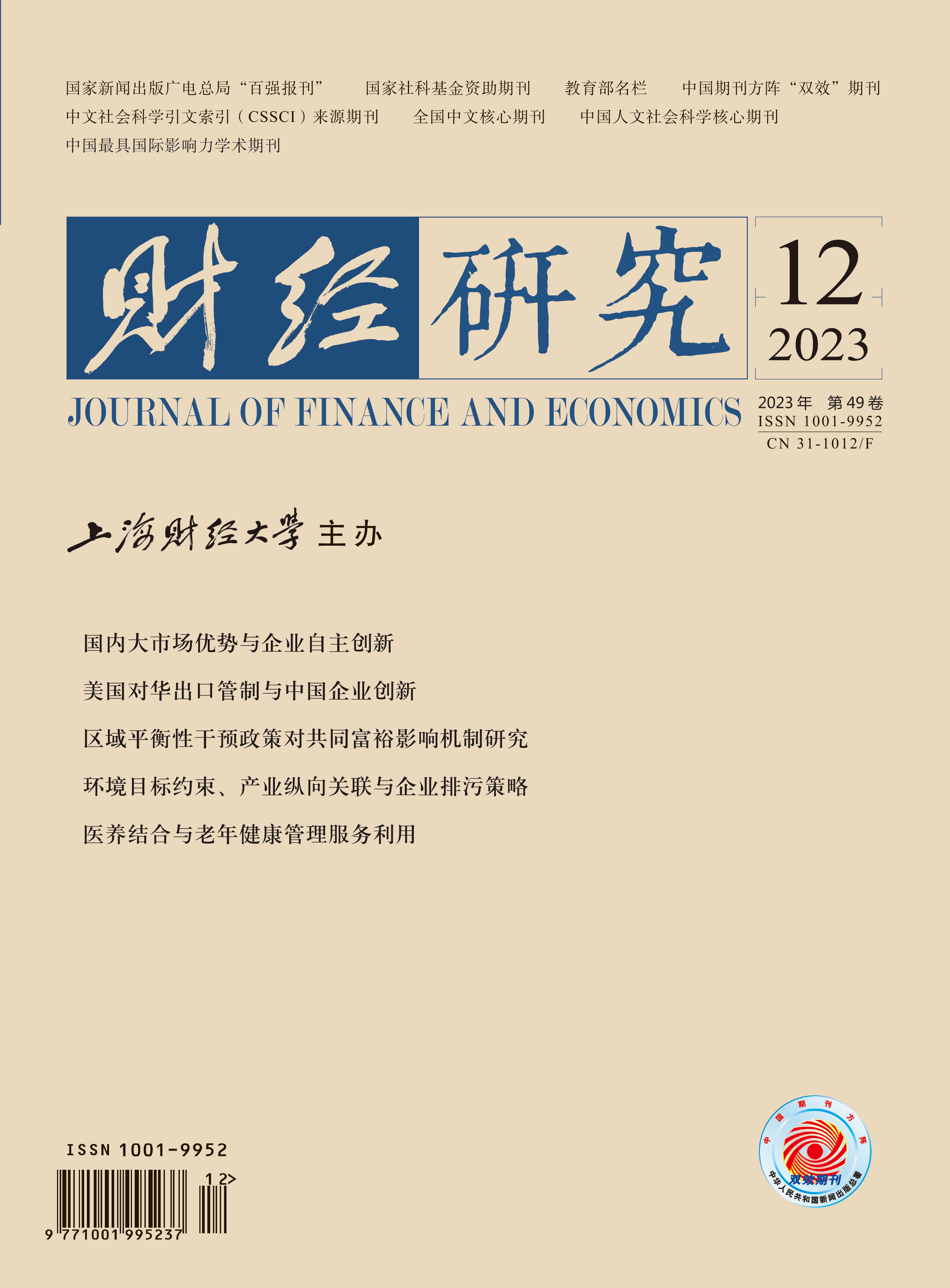双循环发展格局的提出是我国应对当前经济形势变化、推动经济实现高质量发展的重要战略之举,这需要我国企业在以国内大循环为主体的新发展格局中探寻发展机遇。文章利用改进的市场潜力反映国内大市场的需求优势,进而基于中国工业企业数据库、中国工业企业专利数据库和中国地级及以上城市面板数据的匹配数据,探讨在新发展格局背景下,国内大市场优势对企业自主创新的影响效应。结果显示,国内大市场优势可通过降低企业平均成本、促进产业链技术外溢和提升中间品共享效应等渠道显著提升企业自主创新水平,该结论在使用城市地理信息数据和我国清代各州、府、县衙门数据进行内生性分析、考虑样本极端值及更换核心变量后的估计中依然成立。进一步分析发现,国际市场强化了国内大市场优势对企业创新的提升作用,现阶段国内、国际市场之间呈现出明显的互动趋势。国内、国际市场对企业创新的协同影响效应因企业所在行业类型、企业贸易类型、内外资类型及专利类型而具有较大差异。文章结论对于中国企业依托国内统一大市场优势构建自主可控的创新体系,进而提升企业创新水平和国际竞争力方面具有重要的现实意义。
国内大市场优势与企业自主创新
摘要
参考文献
3 李嘉楠,孙浦阳,唐爱迪. 贸易成本、市场整合与生产专业化−基于商品微观价格数据的验证[J]. 管理世界,2019,(8):30−43. DOI:10.3969/j.issn.1002-5502.2019.08.003
4 刘婕,姚博. 国内市场一体化与企业出口附加值提升−对构建双循环新发展格局的启示[J]. 南方经济,2021,(7):16−33.
5 刘修岩,殷醒民,贺小海. 市场潜能与制造业空间集聚:基于中国地级城市面板数据的经验研究[J]. 世界经济,2007,(11):56−63.
6 聂辉华,谭松涛,王宇锋. 创新、企业规模和市场竞争:基于中国企业层面的面板数据分析[J]. 世界经济,2008,(7):57−66.
9 王永钦,李蔚,戴芸. 僵尸企业如何影响了企业创新?−来自中国工业企业的证据[J]. 经济研究,2018,(11):99−114.
10 魏浩,连慧君,巫俊. 中美贸易摩擦、美国进口冲击与中国企业创新[J]. 统计研究,2019,(8):46−59.
11 徐康宁,冯伟. 基于本土市场规模的内生化产业升级:技术创新的第三条道路[J]. 中国工业经济,2010,(11):58−67.
15 Acemoglu D, Linn J. Market size in innovation: Theory and evidence from the pharmaceutical industry[J]. The Quarterly Journal of Economics,2004,119(3): 1049−1090. DOI:10.1162/0033553041502144
16 Aghion P, Bloom N, Blundell R, et al. Competition and innovation: An inverted-U relationship[J]. The Quarterly Journal of Economics,2005,120(2): 701−728.
17 Audretsch D B, Feldman M P. Knowledge spillovers and the geography of innovation[J]. Handbook of Regional and Urban Economics,2003,4: 2713−2739.
18 Brandt L, Van Biesebroeck J, Zhang Y F. Creative accounting or creative destruction? Firm-level productivity growth in Chinese manufacturing[J]. Journal of Development Economics,2012,97(2): 339−351. DOI:10.1016/j.jdeveco.2011.02.002
19 Desmet K, Parente S L. Bigger is better: Market size, demand elasticity, and innovation[J]. International Economic Review,2010,51(2): 319−333. DOI:10.1111/j.1468-2354.2010.00581.x
20 Griliches Z. Hybrid corn: An exploration in the economics of technological change[J]. Econometrica,1957,25(4): 501−522. DOI:10.2307/1905380
21 Hanson G H. Market potential, increasing returns and geographic concentration[J]. Journal of International Economics,2005,67(1): 1−24. DOI:10.1016/j.jinteco.2004.09.008
22 Harris C D. The market as a factor in the localization of industry in the United States[J]. Annals of the Association of American Geographers,1954,44(4): 315−348.
23 Hayes A F. Introduction to mediation, moderation, and conditional process analysis: A regression-based approach[M]. New York: Guilford Press, 2018.
24 Head K, Mayer T. Gravity, market potential and economic development[J]. Journal of Economic Geography,2011,11(2): 281−294. DOI:10.1093/jeg/lbq037
25 Ioannides Y M, Zhang J F. Walled cities in late imperial China[J]. Journal of Urban Economics,2017,97: 71−88. DOI:10.1016/j.jue.2016.10.004
26 Krugman P. Increasing returns and economic geography[J]. Journal of Political Economy,1991,99(3): 483−499. DOI:10.1086/261763
27 Liu Q, Qiu L D. Intermediate input imports and innovations: Evidence from Chinese firms' patent filings[J]. Journal of International Economics,2016,103: 166−183. DOI:10.1016/j.jinteco.2016.09.009
28 Mowery D, Rosenberg N. The influence of market demand upon innovation: A critical review of some recent empirical studies[J]. Research Policy,1993,22(2): 107−108. DOI:10.1016/0048-7333(93)90051-I
引用本文
韩峰, 袁香钰. 国内大市场优势与企业自主创新[J]. 财经研究, 2023, 49(12): 4-18.
导出参考文献,格式为:





 3507
3507  2860
2860

